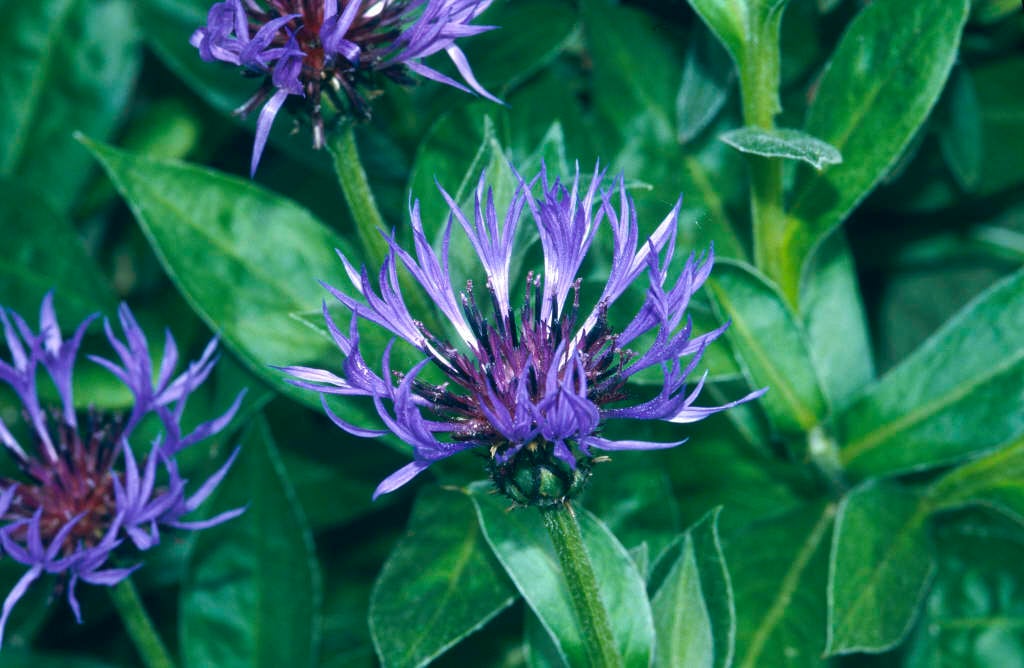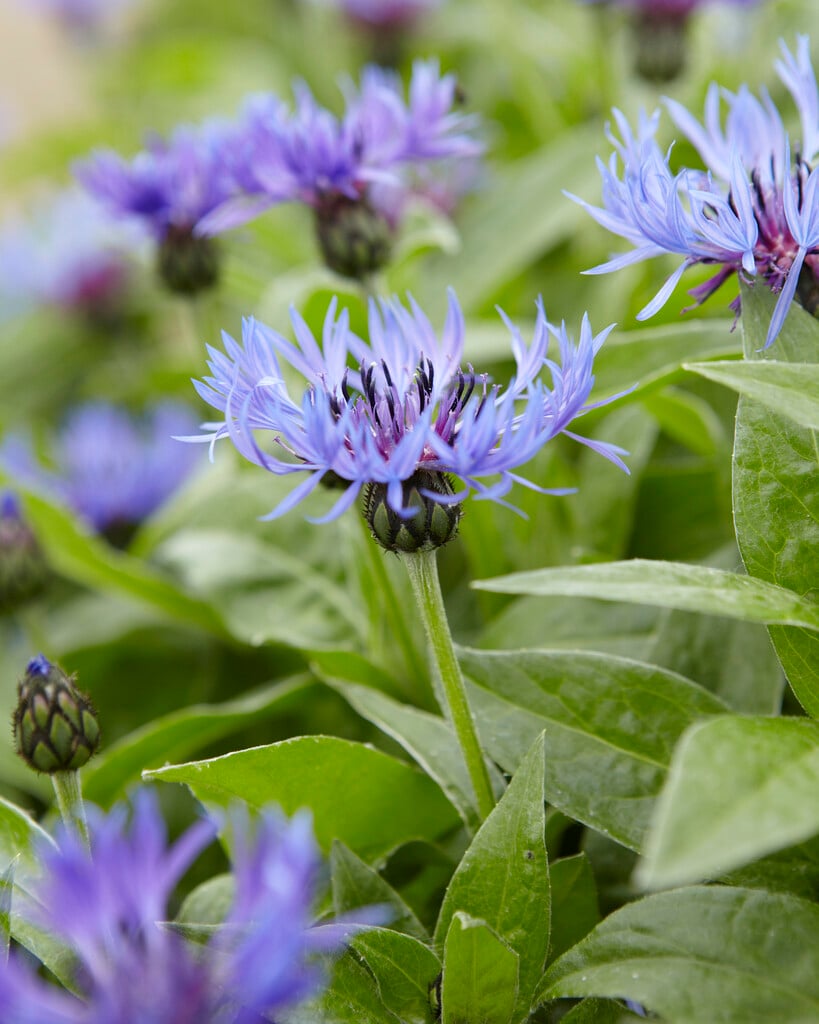Centaurea montana
perennial cornflower
A rhizomatous, mat-forming perennial about 45cm tall, with simple or lobed leaves, hairy beneath, and blue flower-heads 5cm across, reddish in the centre, from late spring to summer
Synonyms
Cyanus montanusSize
Ultimate height
0.1–0.5 metresTime to ultimate height
2–5 yearsUltimate spread
0.5–1 metresGrowing conditions
Moisture
Moist but well–drainedpH
Acid, Alkaline, NeutralColour & scent
| Stem | Flower | Foliage | Fruit | |
| Spring | Blue Red | Green | ||
|---|---|---|---|---|
| Summer | Blue Red | Green | ||
| Autumn | Green | |||
| Winter |
Position
- Full sun
- Partial shade
Aspect
South–facing or North–facing or West–facing or East–facing
Exposure
Exposed or Sheltered Hardiness
H7Botanical details
- Family
- Asteraceae
- Native to GB / Ireland
- No
- Foliage
- Deciduous
- Habit
- Spreading branched
- Genus
Centaurea may be annuals, perennials or subshrubs, with simple or pinnately lobed leaves and showy thistle-like flowers-heads, often with enlarged outer florets
- Name status
Correct
- Plant range
- Mountains of Europe
How to grow
Cultivation
Best grown in moist but well-drained soil in sun or partial shade, needs staking
Propagation
Propagate by seed sown in pots in a cold frame in spring or propagate by division in spring or autumn
Suggested planting locations and garden types
- Coastal
- Cottage and informal garden
- Wildlife gardens
- Cut flowers
- Flower borders and beds
- Ground cover
Pruning
Deadhead regularly to prolong flowering
Pests
Generally pest-free
Diseases
May be affected by powdery mildews
Get involved
The Royal Horticultural Society is the UK’s leading gardening charity. We aim to enrich everyone’s life through plants, and make the UK a greener and more beautiful place.

